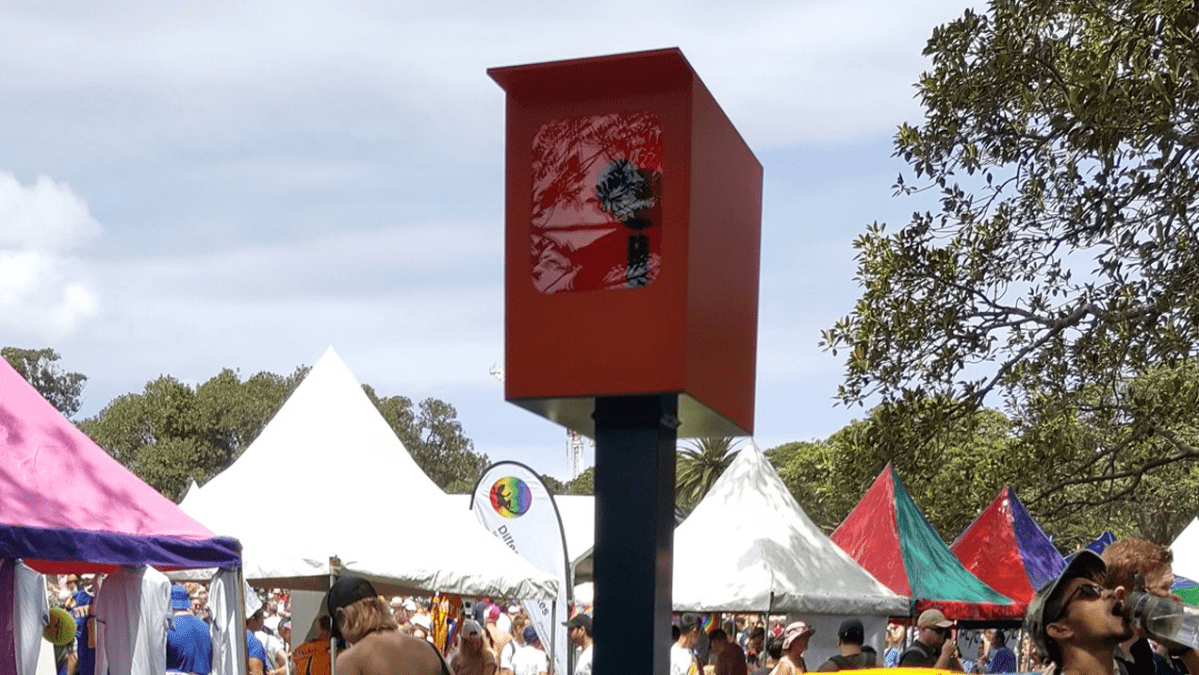
Attendees at yesterday’s Sydney Mardi Gras Fair Day were startled to see a nondescript red camera filming the crowd.
The camera used facial-recognition technology to count attendees, but could also be used for law enforcement purposes in future. This has caused concern among digital rights advocates.
The camera had a sign which read: “By observing, we’re making this event smarter.” PEDESTRIAN.TV contacted the company behind the camera, Tomorro, to learn more about what the technology is being used for.
“The intention is to provide more accurate insights into events,” said Tomorro insights specialist Luis Catarino. “People counting at the moment is done by security with clickers.”
Hi Adrian, this is just counting the number of people visiting us at Fair Day today. No other information is being collected.
— Sydney Gay and Lesbian Mardi Gras (@sydneymardigras) February 16, 2020
Tomorro’s cameras work by assigning a unique, 16-character ID to each person who walks by. In theory, the navigation paths of event attendees could also be determined by using thousands of calculations.
The technology does not pull mobile phone data, nor does it identify people by name.
Digital Rights Watch Chair Tim Singleton Norton says punters need to be informed and aware whenever facial-recognition technology is in use. In January, the organisation launched a campaign to ban surveillance that used facial-recognition technology in Australia.
“If you’re going to do that sort of invasive technology, you need to have a social licence,” he told PEDESTRIAN.TV. “The only way to have a licence is to engage with the populace.”
Catarino defended the technology. “I would actually have no idea who went to the event, unless someone provided me an image that they’re interested in finding,” he said, before suggesting that police could provide an image of a suspect in a crowd which the system could then match.
Computers often reflect the biases of the humans who created them, Singleton noted. He said this is particularly important in the field of law enforcement where racist biases can come into play.
“Individually you or I have to give up rights for the 20% that might be caught by a racist computer,” he said.
However, the only kind of crowd control Catarino envisions would be redirecting festival-goers to bathrooms which are less busy.
Tomorro won’t have cameras set up at the Mardi Gras Parade on February 29 as the event’s large layout makes it more difficult to count attendees, but the company does expect to see more deployments when they formally launch next month.
Some Twitter users expressed concern over the use of facial-recognition technology in what should be a safe space. Indiscriminate videography at such an event typically carries several risks, including outing attendees who may not wish to be identified.
“If you haven’t talked to them about it and you haven’t actually got their permissions when they’re already surveilled and treated as if they’re they other, then you’re going about it the wrong way,” said Singleton.
“No one’s ever explained why that’s necessary, and that’s the creepy bit,” he added, stating that counting attendees was not justification enough. “Justify its use and maybe it’ll be OK, if you jump straight to implementing it then it already looks a bit dodgy.”
Catarino is confident that Tomorro’s cameras do not breach any right to privacy, even at Mardi Gras events. “I understand the concern about filming at an LGBT event because there’s a lot of stigma attached to that, but we don’t keep the data or the vision,” he said.
“We’re not interested in who the people are, privacy is paramount.”



